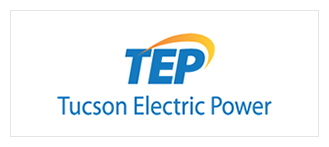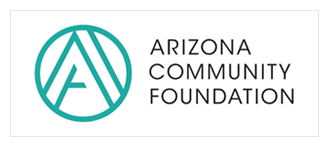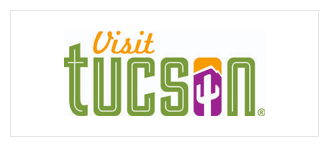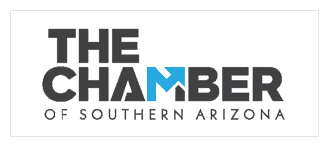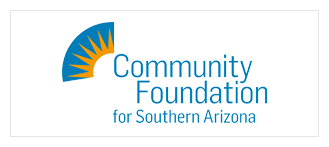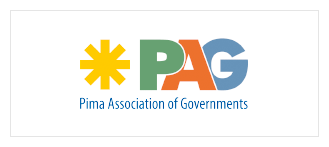 Measuring Progress and Inspiring Action in Quality of Place
Measuring Progress and Inspiring Action in Quality of Place
This report measures the progress of Southern Arizona's quality of place. It highlights areas where the region has excelled and identifies areas that still require improvement. The MAP aims to measurably improve Southern Arizona through data-driven collective civic action and education. The data and analysis presented in the MAP Dashboard's Quality of Place category facilitate this by identifying key trends, tracking performance, and informing future policy decisions. The MAP measures progress and inspires action by providing our leaders with facts that inform their decision-making on key issues in Southern Arizona. As the MAP Dashboard celebrates its 10th anniversary, we will examine how the quality of place has improved (or not) in our region over the past decade.

Key Changes Over the Past Decade in Quality of Place
Key changes over the past decade are highlighted below for the MAP's quality of place indicators, using an interactive graphic. The MAP Dashboard compares the Tucson Metropolitan Statistical Area (MSA) to other peer regions around the West. In some cases, only select regions are included in the interactive graphics to emphasize Tucson’s change. Data for all areas are available under each indicator’s core landing page. They are linked throughout the article.
Air Quality
Air quality is an important factor that influences public health and the well-being of a region's residents. Poor air quality limits outdoor activity and poses health risks for sensitive populations, including young children and individuals with respiratory conditions. In 2024, the Tucson Metropolitan Statistical Area (MSA) reported "good" air quality on 30.9% of days. That was significantly lower than a decade earlier (2014), when Tucson had 54.0% of days rated "good". The recent decrease in air quality may be partially due to increased smoke from wildfires across the Southwest. Among peer MSAs, Phoenix consistently reports one of the lowest rates of "good" air quality days each year. When combining "good" and "moderate" days, Tucson's ranking improved substantially to third among peers in 2024, with 96.7% of days falling within this range.
Figure 1: Air Quality Days Considered Good (2014-2024)Go to Air Quality Graph
Cost of Living
The Tucson Metropolitan Statistical Area (MSA) has a relatively low cost of living compared to many of its peer MSAs and has improved over the past decade. In 2023, Tucson ranked fourth, up from fifth in 2013. Tucson's cost of living decreased from 2.2% below the U.S. in 2013 to 5.7% below in 2023. When breaking down the overall cost of living in Tucson by category in 2023, housing costs were 2.0% below the national average, while utilities were 17.0% lower. Among peers, San Diego had the highest cost of living in 2023, 11.5% above the U.S. Over the past decade, Phoenix has seen the largest decline in cost of living among peers, falling from 2.5% below the U.S. in 2013 to 5.5% above in 2023.
Figure 2: Cost of Living Indexed to U.S. Value = 100 (2013-2023)Go to Cost of Living Graph
Creative Occupations
Workers in creative occupations contribute to developing new ideas, technologies, and expressions that drive local innovative and economic growth. The MAP Dashboard indicator, Creative Occupations, explores both employment and wage data for this field. In 2024, the Tucson Metropolitan Statistical Area (MSA) reported relatively low employment per 1,000 residents and low wages for creative occupations when compared to peer MSAs. Focusing on wages, Tucson ranked ninth among peers in 2024, an improvement from 11th in 2014. Wages for creative occupations in Tucson grew 39.3% over the decade, outpacing the national growth rate of 35.0% and ranking near the middle of peer MSAs. For additional details on wage differences and employment rates for the super creative core and creative professional occupations, visit the core indicator, Creative Occupations.
Figure 3: Average Wage for Creative Occupations (2014-2024)Go to Creative Occupation Graph
Outdoor Recreation
Outdoor recreation provides significant social and economic benefits to communities. Access to scenic views, outdoor recreational opportunities, and open space contributes to amenity-driven economic development, increased real estate values, and improved public health outcomes. The Tucson Metropolitan Statistical Area (MSA) includes two national parks located within its boundaries, Saguaro National Park and Organ Pipe Cactus National Monument. The MAP tracks both national park visits and the percentage of federal recreation land within each of its peer MSAs. As of 2016, 29.0% of Tucson's land was designated federal recreation land, ranking fifth among peers. Visits to national parks tend to fluctuate with periods of economic growth and decline. Over the past decade, annual national park visits in the Tucson MSA ranged from an increase of 33.2% to a 25.7% decrease during the pandemic, when many parks were closed or operating at reduced capacity. In 2024, Tucson reported the lowest growth in park visits among peer MSAs, with a 5.7% decline.
Figure 4: National Park Visits Growth Rate (2014-2024)Go to National Park Visits Graph
Public Safety
Crime rates influence both the social and economic well-being of communities, particularly at the neighborhood level. The MAP explores public safety using several measures, including violent crime, property crime, homicide rates, and firearm fatalities. As with other health-related indicators, the data are reported with a considerable lag to ensure accuracy. The most recent public safety data available on the MAP is from 2020 and 2022, with updated data from the FBI expected in the near future. Visit the Public Safety indicator page for the upcoming data updates.
In 2020, the Tucson Metropolitan Statistical Area (MSA) had a violent crime rate of 473.5 per 100,000 residents, placing it in the middle of peer MSAs. Over the previous decade, Tucson's violent crime rate increased by 11.3%, the fourth-largest increase among peers. Albuquerque and Denver experienced the largest increases in violent crimes between 2010 and 2020, at 50.1% and 45.5% respectively, followed by Phoenix at 25.2%. In contrast, Las Vegas and El Paso saw notable declines in violent crime rates, decreasing by 37.3% and 31.7%, respectively.
Figure 5: Violent Crime Rate (2010-2020)Go to Crime Rate Graph
Voter Turnout
Voter turnout is a measure of civic engagement and the willingness of a region's residents to participate in the political process. Generally speaking, higher voter turnout is desirable, as it lends to election results that reflect the will of the people. Low turnout may result from a variety of factors, including but not limited to socioeconomic status, age, disillusionment, indifference, or contentment. In the 2024 presidential election, the Tucson Metropolitan Statistical Area (MSA) had a turnout rate of 60.9%. That was higher than Arizona's rate of 57.6% and the national rate of 59.0%. Tucson MSA is the same geographic region as Pima County. When we compare Pima County to other counties in Arizona, the turnout rate of 60.9% ranked 6th among the 15 counties. Yavapai County had the highest turnout rate at 72.4%, while Yuma had the lowest at 43.8%. Turnout rates for non-presidential years are available on the Voter Turnout indicator page.
Figure 6: Voter Turnout Rate for Presidential Elections (2004-2024)Go to Voter Turnout Graph
*Values are interpolated. That means the values are filled between the actual valid data points. When paused, the visualization only displays actual values.
Why is it important?
Indicators in the Quality of Place category reflect the many factors that influence a region's overall desirability. Feeling safe in your neighborhood and surrounding community supports civic engagement, participation in local activities, and time spent outdoors. Likewise, clean air enhances opportunities for outdoor recreation and overall well-being. Access to cultural amenities, such as the arts and entertainment, also contributes to a region's quality of place. An individual's perception of quality can differ based on factors such as race and ethnicity, age, socioeconomic status, gender, and personal preferences. The MAP's Quality of Place category highlights indicators that reflect a wide range of factors to capture differences in how quality of place is perceived.
Learn More
To learn more about the Quality of Place category on the MAP Dashboard, visit the overview page. You can view more data and information about the six indicators in the Quality of Place category by clicking on the links below.
Air Quality
Cost of Living
Creative Occupations
Outdoor Recreation Opportunities
Public Safety
Voter Turnout
Explore the articles already published by clicking on their link below. Stay tuned for the remaining articles, which will measure the progress of each of the MAP’s six categories.
- "Measuring Infrastructure Progress Over the Past Decade"
- "Measuring Education Progress Over the Past Decade"
- "Measuring Health & Social Well-Being Progress Over the Past Decade"
- "Measuring Workforce & Demographics Progress Over the Past Decade"


